National Parks Net-Zero Portal
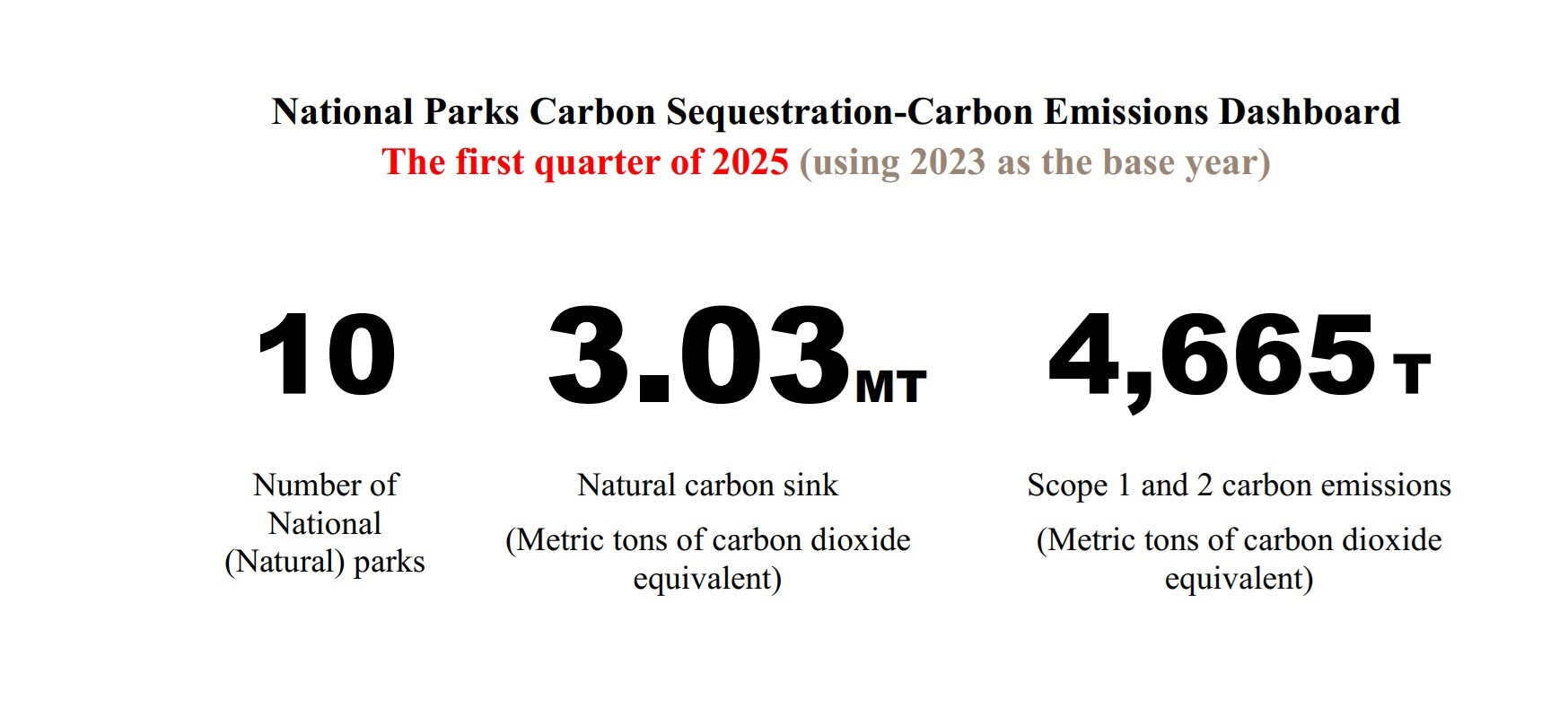
The national parks play a key role in the natural carbon sink function of Taiwan
Taiwan plays an important role in the global ecosystem. With its unique geographical and climatic conditions, Taiwan has diverse ecological landscapes ranging from lowlands to high mountains, from wetlands, streams to oceans, covering tropical, subtropical, temperate and subarctic zones. The ecosystem of a climate zone is like a microcosm of the global ecosystem. Facing the challenge of climate change, national parks, wetlands and coastal areas are the most critical natural carbon sinks and storage areas in Taiwan's 2050 net-zero transformation. It is not only an important forest carbon sink area, but also a provenance bank and restoration base for salt marshes, mangroves, seagrass beds and other ecosystems, which is crucial to maintaining the natural carbon sink function.
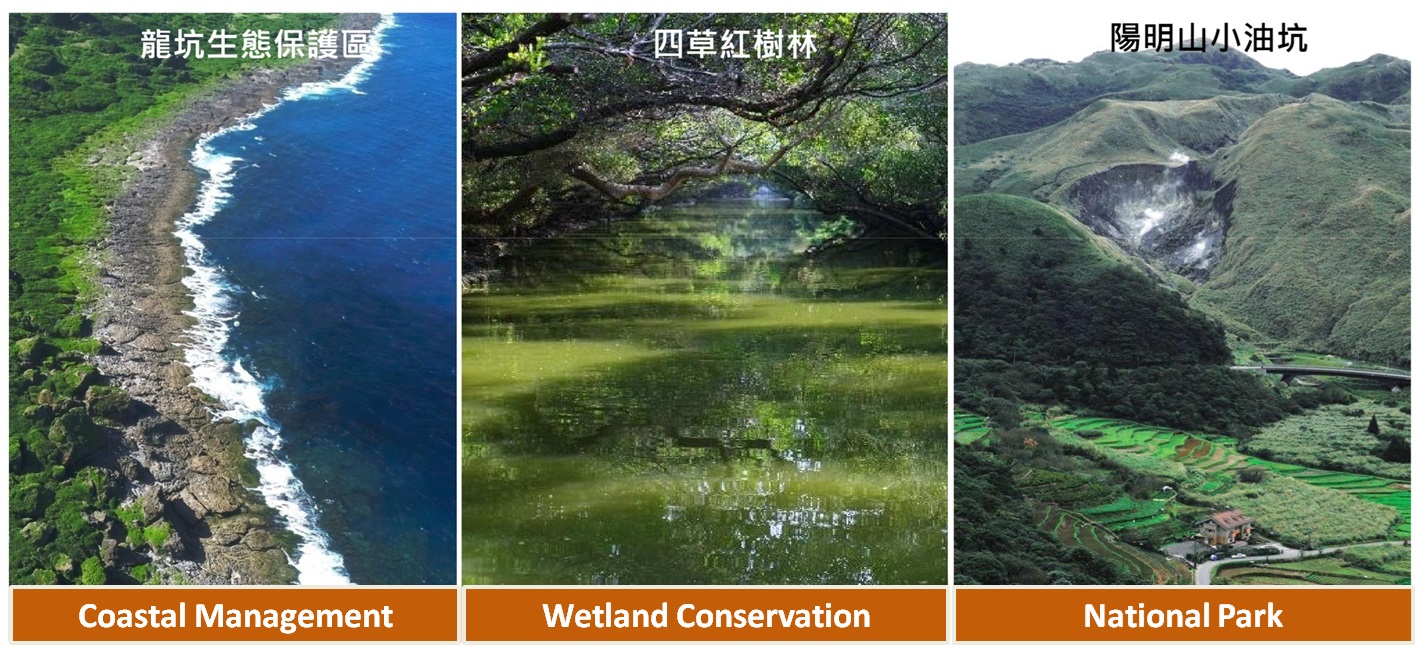
In order to respond to the net zero transition, National Park Service launched related work such as the inventory of natural carbon sinks in national parks and organizational carbon inventory in 2023. According to survey data, Taiwan’s national (natural) park system can remove more than 3.03 million metric tons of carbon dioxide equivalents (CO2e) each year. In addition, taking 2023 as the baseline, the total carbon emissions of national park offices were approximately 4,665 metric tons of carbon dioxide equivalents (CO2e).
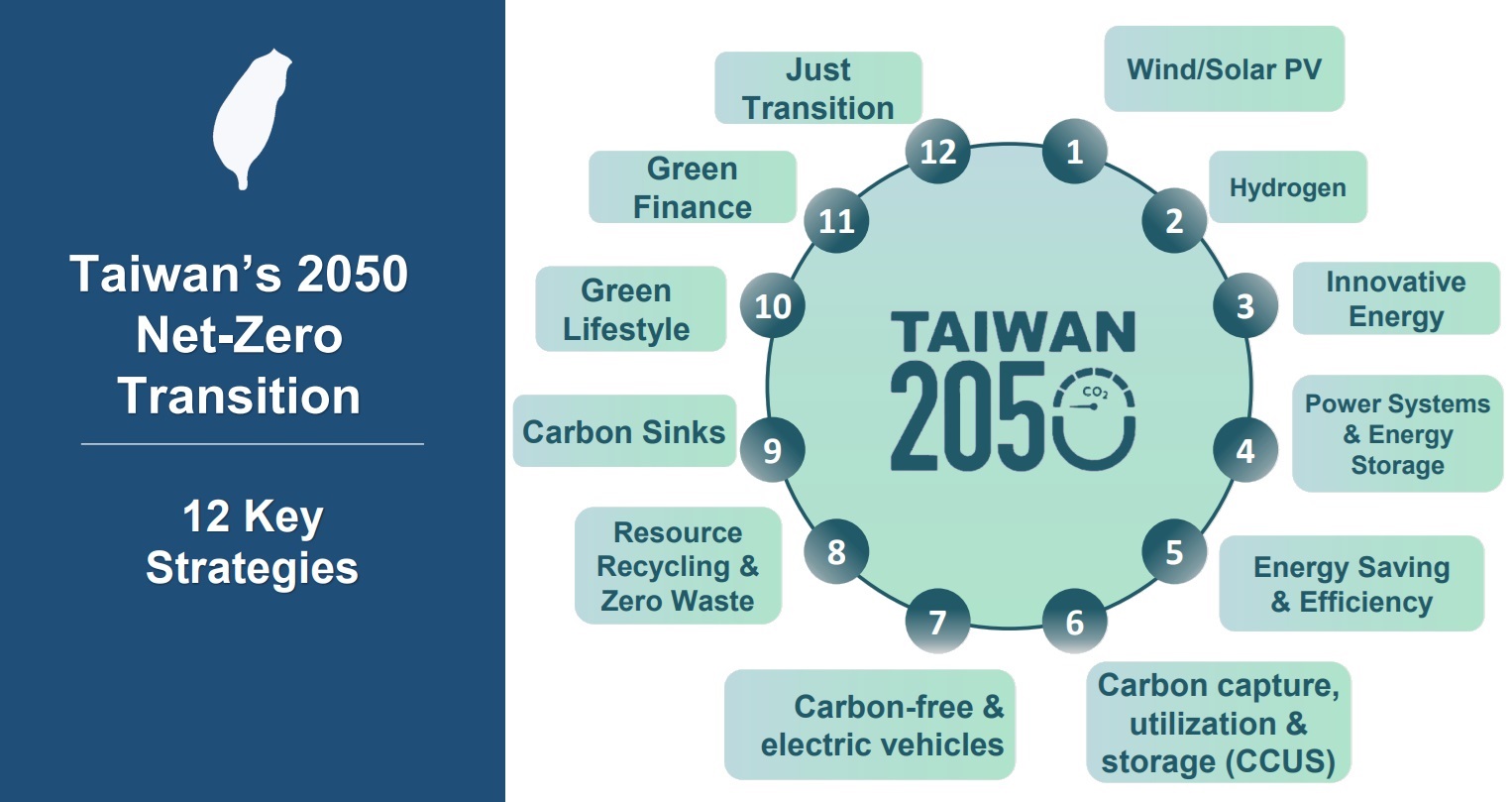
Taiwan’s 12 Key Strategies for Net Zero Transformation by 2050: 9.Carbon Sinks
National park launch carbon management plan
█ National Parks Natural Carbon Sink
• Current situation
Taking 2023 as the baseline, the overall natural carbon sink of the national park contains blue and green carbon, the total carbon removal is approximately 3.03 million metric tons of carbon dioxide equivalent.
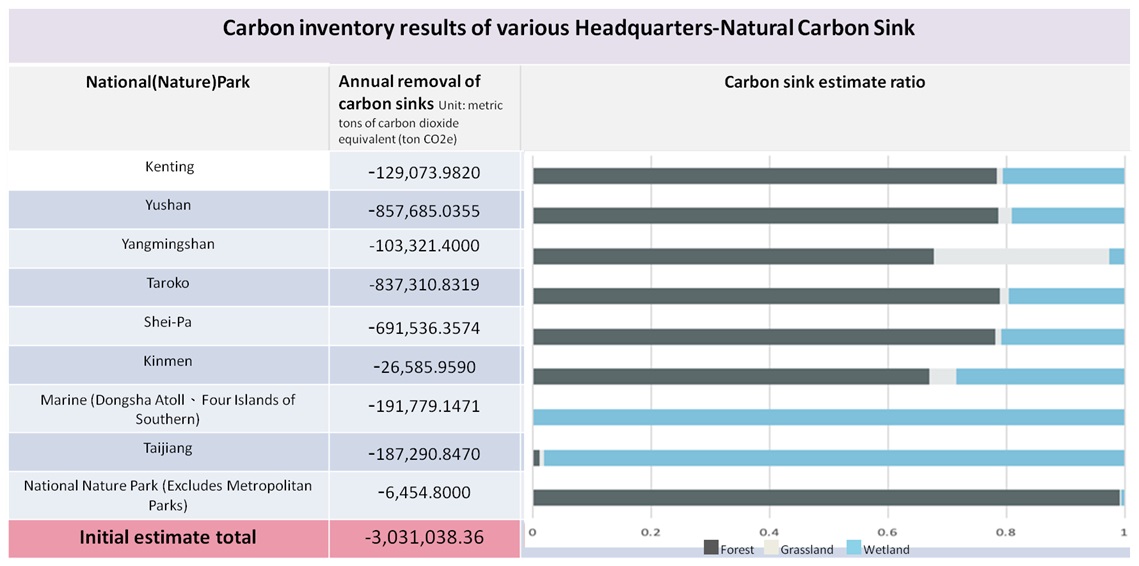
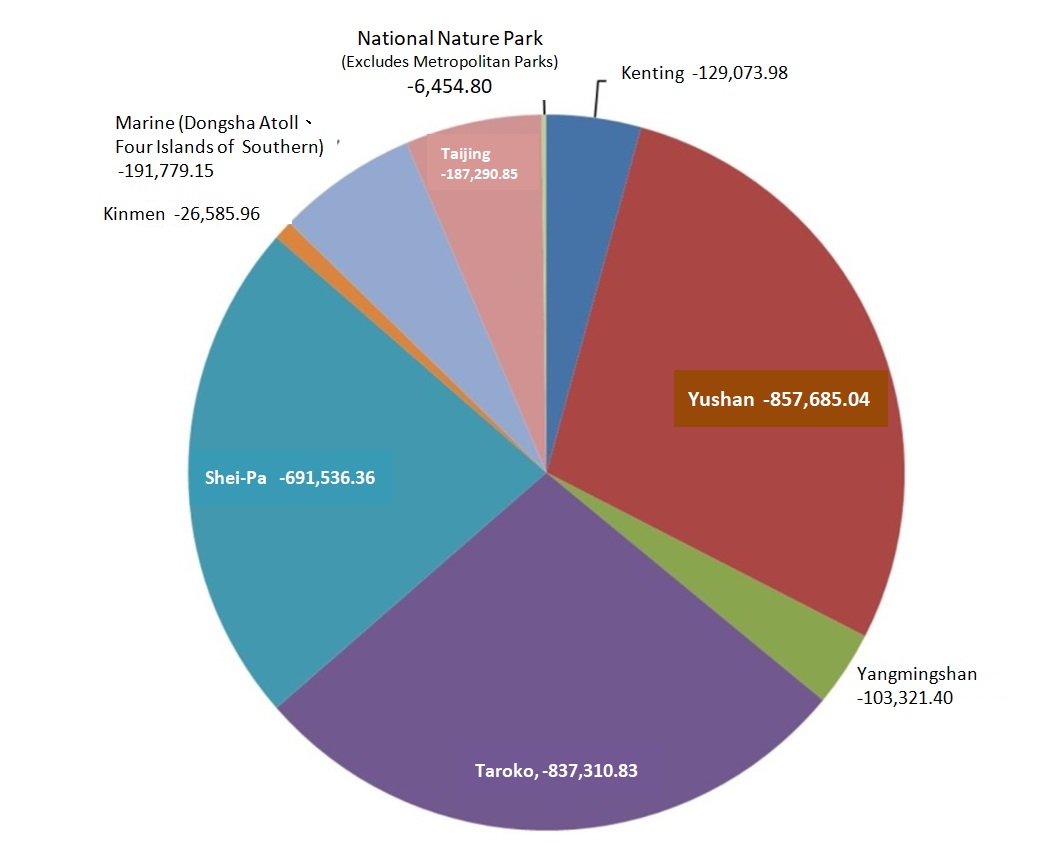
• Action to increase carbon sequestration
- Inventory the existing invasive species, such as the removal area of White Popinac in Kenting National Park and degraded habitats, the abandoned farmland in the Wuling area of Shei-pa National Park, and afforestation projects on the sandbars of Wangzailiao in Taijiang National Park. Each national park continues to inventory locations where carbon sequestration can be increased.
- From 2025 to 2028, conduct mangrove planting effectiveness trials, habitat hydrology assessments, and overall hydrological improvements in the Qigu Salt Field Wetland of Importance in Taijiang National Park.。
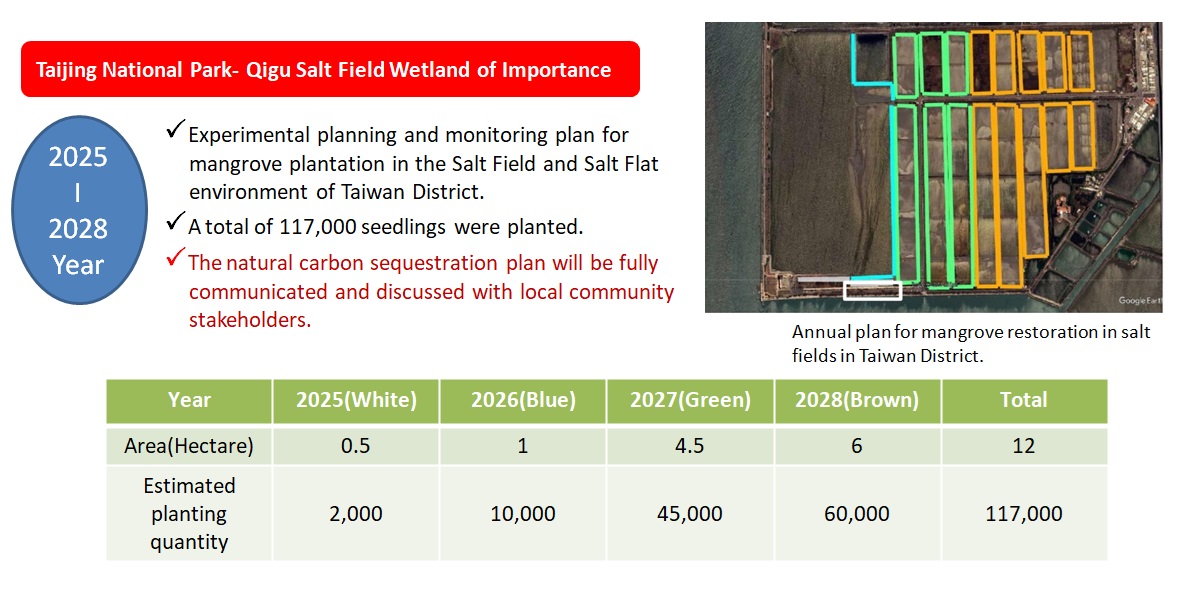
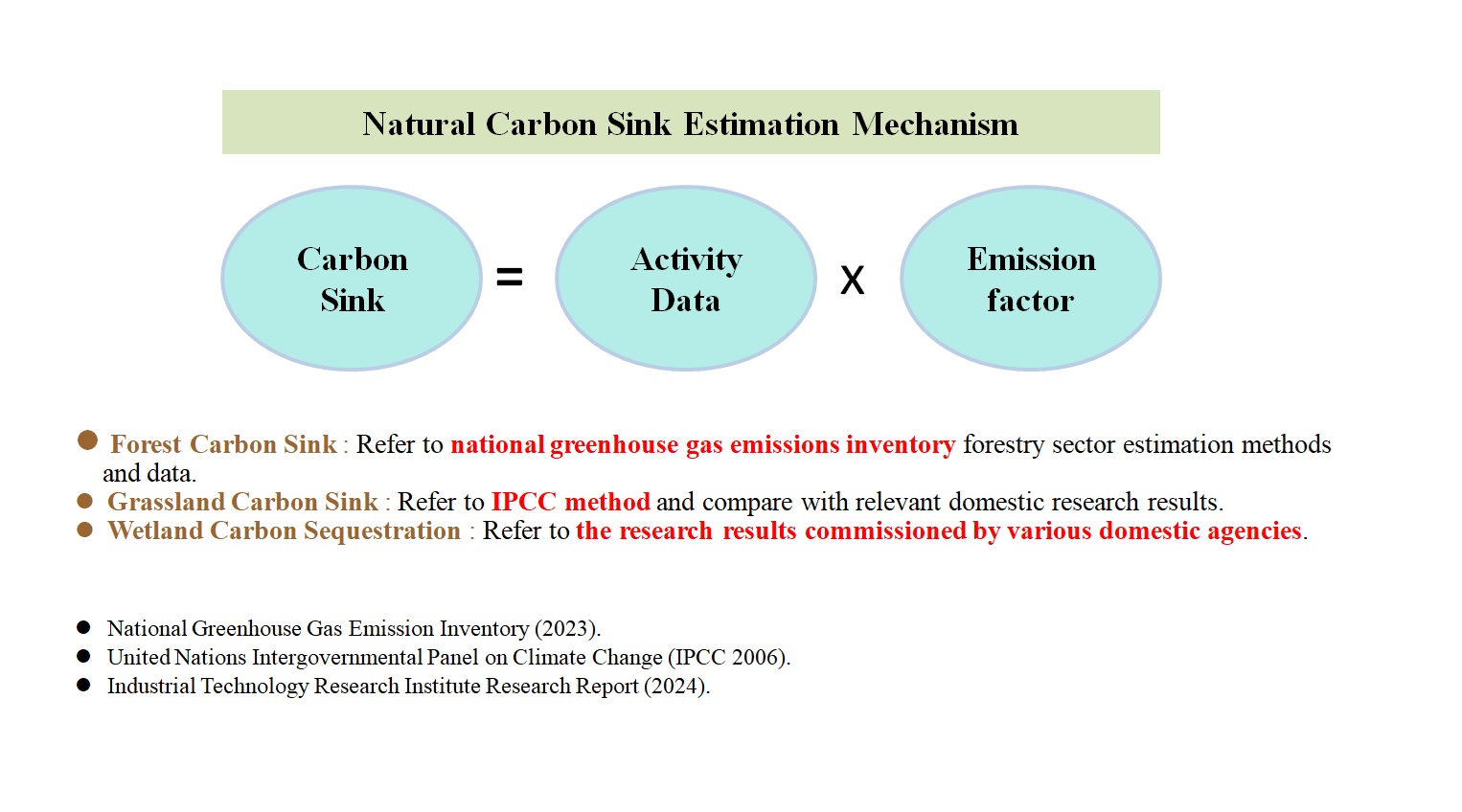
█ National Parks Carbon Emissions
Current Situation
- Carbon inventory standards: Adopt ISO-14064-1 carbon inventory standards as the basis for promoting the National Park Headquarters to organize carbon inventories.
- Inventory year and scope: 2023 is used as the baseline data, and the inventory scope includes emission sources in Scope 1 (direct emissions) and Scope 2 (indirect emissions).
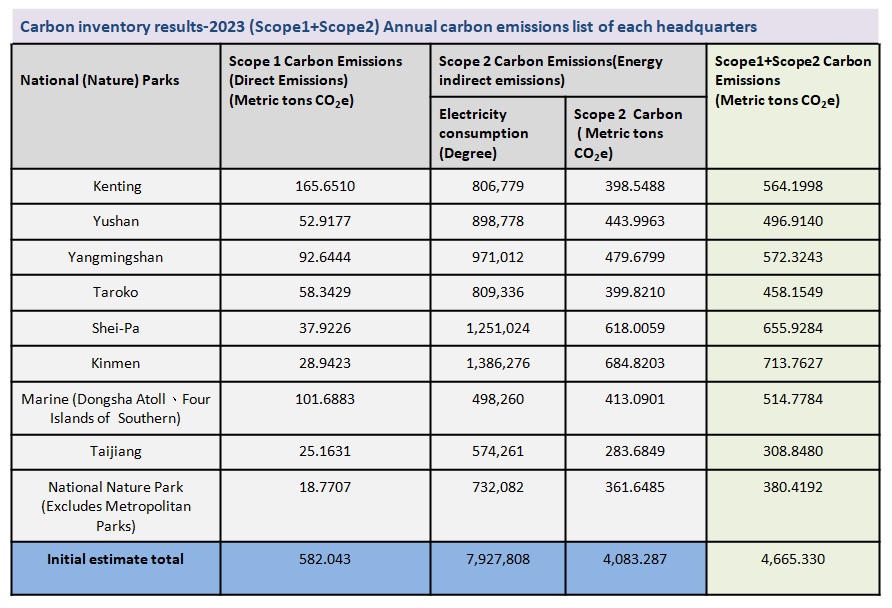
Special Notes:
- Kinmen National Park has a high carbon emission in Scope 2. The main reason is that the National Park Administration has 41 locations and is open 364 days a year (closed on New Year's Eve). In addition, sewage treatment plants (facilities) that consume 11.7% of electricity are mostly open 24 hours a day.
- The carbon emissions of the Scope 2 of the Marine National Park are relatively high: the electricity used in the outlying islands comes from fuel-fired power generation. Its carbon emissions are estimated according to the 2023 assessment report of Taiwan Power Company. The carbon emission factor of electricity is about 0.986 kg of carbon dioxide equivalent, which is about 0.494 kg of carbon emission factor announced by Taiwan Power Company.
- Some offices and field stations share the same electricity meters with park shops.
Strengthening carbon reduction actions based on the principle of natural environment suitability
- All national park offices will gradually strengthen energy efficiency improvements in park buildings starting from 2025.
- National parks will dedicate to increasing carbon sequestration and reducing emissions while taking into account ecological conservation, environment, recreation safety and quality.
- Prioritize inventory reduction of energy consumption, and then consider renewable energy applications.
- Promote low-carbon tourism and net-zero green living in national parks and wetlands.
- It is expected that from 2025 to 2026, through environmental education activities and eco-tourism tours, national parks will generate low-carbon green tourism strategy.
- Starting in 2027, national parks will integrate green transportation and net-zero green living, calculate the carbon footprint of low-carbon ecotourism, and promote the use of low-carbon vehicles and cross-sector collaboration.
National Park Carbon Management Strategy and Vision
Protecting biodiversity within the region means safeguarding Taiwan’s core natural carbon sinks. The national park carbon inventory is an important starting point for the transition to net-zero. Moving forward, efforts will continue to advance the scientific management of natural carbon sinks in national parks, establish carbon balance accounts for national parks, and further promote green tourism in national parks. Additionally, initiatives will support the development of low-carbon buildings in national parks, reduce carbon through nature-based solutions, and actively propose a roadmap for the net-zero transition of national parks by 2050.
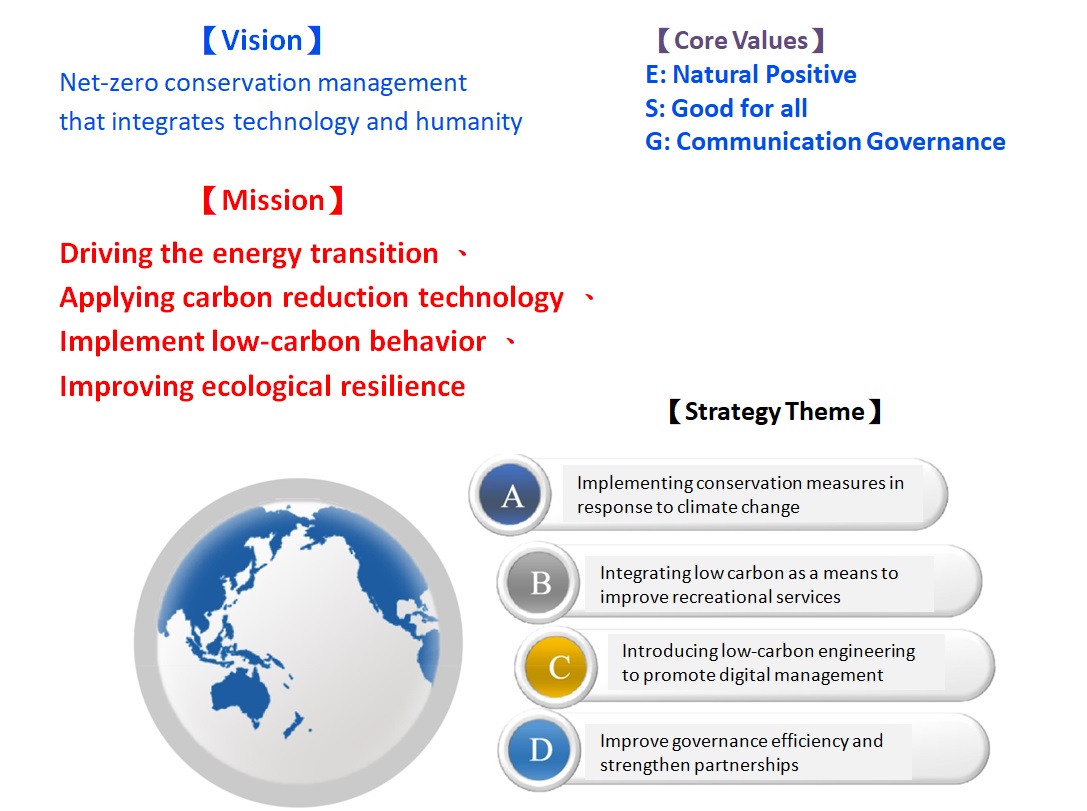
Related News and event information
